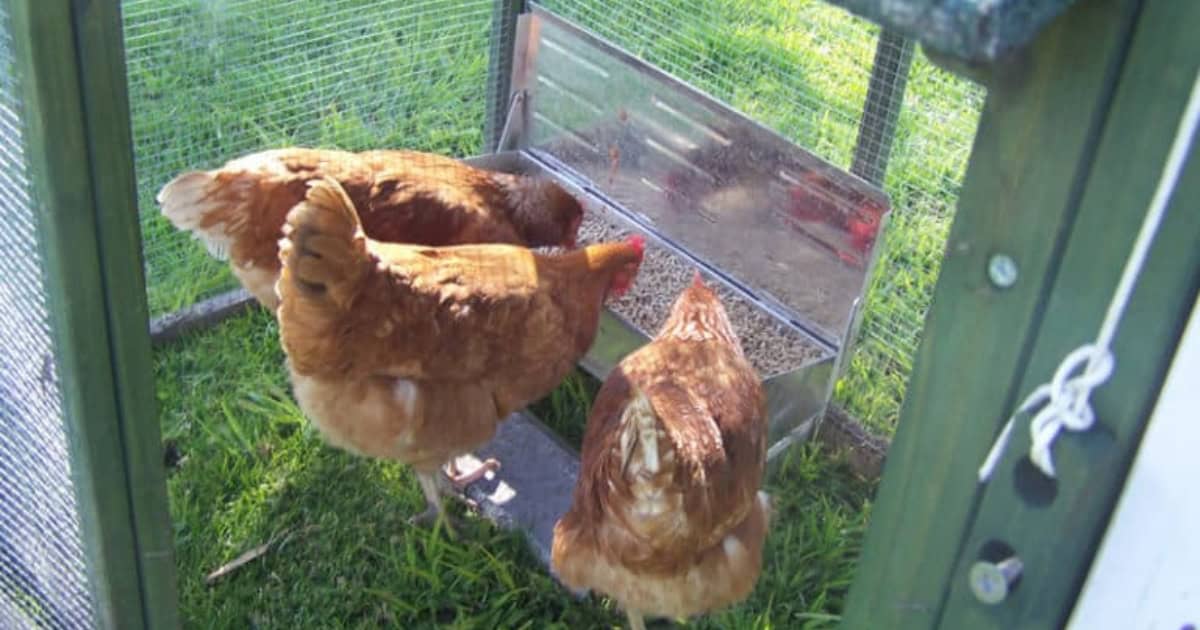Chickens
Feeding Your Chickens: An Aussie Guide to Healthy Hens
Ever watch your chooks peck around in the yard and wonder if you’re feeding your chickens all they need? Keeping our feathered friends happy and healthy is more than just tossing them a handful of grain now and then.
The task of feeding your chickens can initially seem challenging due to the diverse dietary requirements and preferences of these feathered companions.
Does a plate full of colourful fruits, crunchy veggies, and protein-packed bugs sound appetising to you? Well, it’s even better for your chickens! And did you know about grit? No worries if not – we’ll get into that too.
Continue reading to learn how to perfectly balance your bird’s diet. Discover delicious treats that will make them chirp with joy and gain insight into smart seasonal adjustments.
- Understanding the Basics of Chicken Nutrition
- Balanced Diet for Chickens: What It Looks Like
- Commercial Feeds vs. Homemade Diets
- The Role of Grit When Feeding Your Chickens
- Treats Your Chickens Will Love
- Feeding Chicks vs. Adult Chickens
- Common Feeding Mistakes to Avoid
- Seasonal Adjustments in Chicken Feeding
- Toni’s Wrap
Understanding the Basics of Chicken Nutrition
Nourishing your chickens correctly is crucial for their overall health and egg production. Chickens need to consume a mix of proteins, carbohydrates, fats, vitamins, and minerals for their health and egg production.
Proteins: Building Blocks of Life
Protein is essential for chicken growth, as it provides the building blocks necessary for the development of muscles, feathers, and organs. Protein also plays a vital role in egg production. Foods rich in protein like mealworms can give them this much-needed nutrient.
Carbohydrates: Energy Suppliers
The bulk part of commercial chicken feed consists mainly of grains which provide carbohydrates – the primary energy source for your feathered friends. Carbs help keep your chooks active throughout the day.
Fats: Vital but Limited
Fats are another important element that should be included sparingly as it’s a high-energy foodstuff but could lead to obesity if overfed. It’s best given during colder months when the extra calories can help keep them warm.
Examples include vegetable oils (like soybean oil) and animal fats. Sunflower seeds, flaxseeds, and insects also offer essential fats in their diet.
Vitamins & Minerals: For Immunity & Health
Vitamins and minerals are essential for bone development, an immunity boost, digestion support among other benefits.
Vitamin deficiencies can lead to various diseases so ensuring proper intake becomes pivotal here. Specially designed supplements can fulfill these needs quite effectively.
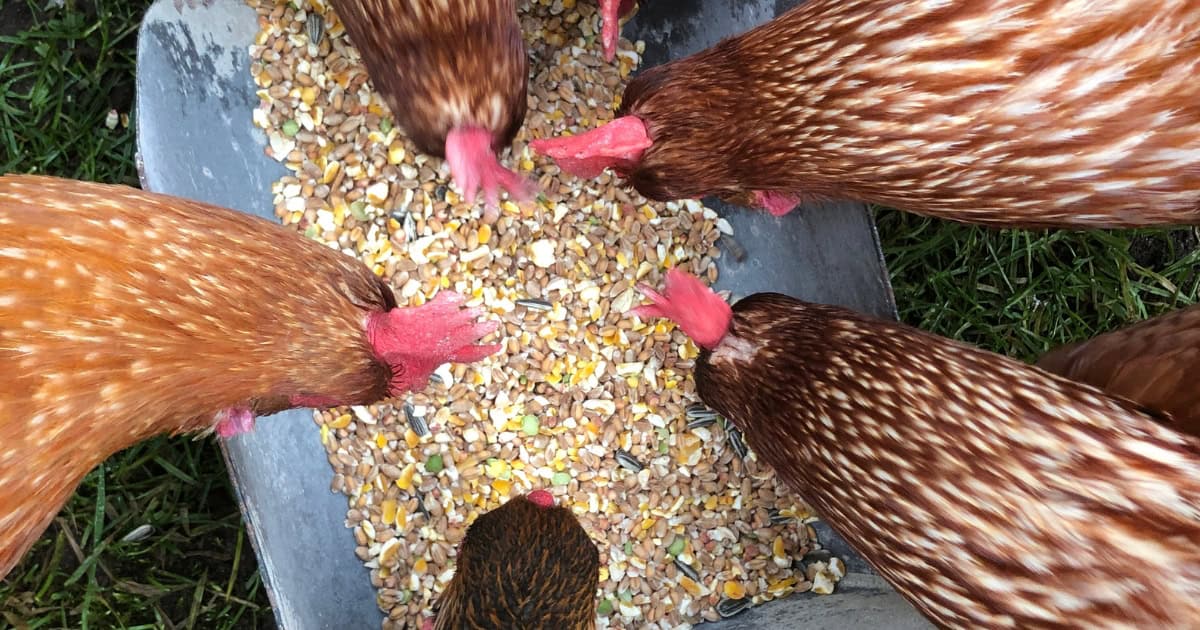
Balanced Diet for Chickens: What It Looks Like
Chickens eat a varied diet that includes grains, insects, vegetables, and commercial poultry feed to ensure they receive all the essential nutrients they need.
Feeding your chickens a balanced diet is important to ensure they have adequate nutrients for growth, egg production, and overall health while avoiding overfeeding and promoting a diverse and nutritious diet.
Starter Feed
Starter feed is formulated for newly hatched chicks up to about 6-8 weeks of age. It contains higher protein levels (typically 18-20%) to support rapid growth and development. Starter feed also provides essential vitamins and minerals for young chicks.
Grower Feed
Grower feed is designed for young chickens that have outgrown the starter feed stage but are not yet old enough for layer feed. It typically has a lower protein content (around 16-18%) and is suitable for chickens from 8 to 18 weeks of age.
Layer Feed
To support optimal egg production, providing hens with a steady supply of layers pellets in their diet is essential.
Layer feed usually has around 16% protein and is recommended for chickens older than 18-20 weeks that are actively producing eggs.
It contains the specific nutrients, such as calcium, necessary for eggshell formation and maintenance.
Broiler Feed
Broiler feed is formulated for chickens raised for meat production. It has a higher protein content, typically around 20-22%, to promote fast growth and muscle development in a relatively short time.
All-Purpose Poultry Feed
Some poultry keepers prefer to use an all-purpose feed that can be given to chickens of different ages and purposes.
These feeds typically have moderate protein levels, around 16-18%, and can be fed to both layers and broilers, but they may not optimize performance as well as specialized feeds.
A Somerzby chicken feeder is a great way to guarantee that your chickens consistently have access to food that remains safeguarded from both pests and adverse weather conditions.
Scratch Grain
Scratch grains, often referred to as “scratch,” are a blend of whole grains like corn, wheat, and barley that you can feed chickens as a treat. While scratch grains are not a complete diet, they serve as a valuable addition to a chicken’s nutrition, providing extra energy and encouraging natural foraging behaviours.
Feeding your chickens scratch grains in moderation can help keep chickens active and engaged, contributing to their overall well-being and happiness.
Proteins
Around 20% to 30% of your chicken’s feed should be protein-based like soybean meal, insects, seeds, or lean meat scraps. This supports muscle growth and egg production.
Vegetables & Fruits
Fresh fruits and veggies provide necessary vitamins but should only constitute about 10% of their diet to ensure they don’t fill up on them instead of more nutritious food items.
Dietary Supplements
Necessary minerals such as calcium are vital for the shell formation of laying hens. Dietary supplements can help meet this need along with other nutrients not covered by regular feeding
It’s important that these guidelines serve as just that – guides rather than strict rules because each flock may have different needs based on factors like breed or age. For more information on the different types of chicken feed, you can check out our blog here.
Commercial Feeds vs. Homemade Diets
When it comes to feeding your chickens, there are two main options: commercial chicken feed and homemade diets. Both have their advantages and disadvantages, yet one is often chosen for its convenience.
Commercial feeds are often favoured for convenience. They’re formulated to meet all the nutritional needs of your birds so you don’t need to worry about balance or variety.
However. some people prefer a more hands-on approach with homemade diets. These can give you control over what goes into your bird’s meals. For example, using home-grown veggies or leftover kitchen scraps in addition to grains and proteins ensures variety and reduces waste.
A blend of both approaches might be ideal for many backyard chicken owners – using commercial feed as the base diet supplemented by wholesome table scraps for diversity and treats.
Keep in mind though that certain foods aren’t suitable for chooks; here’s a handy guide on what not to feed chickens.
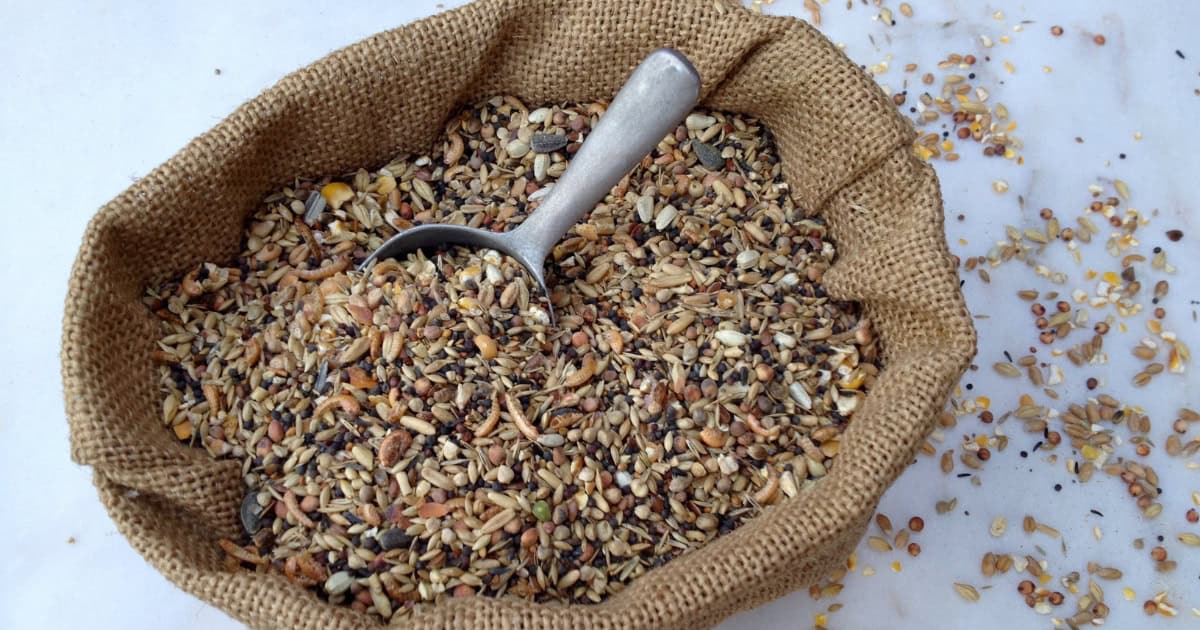
The Role of Grit When Feeding Your Chickens
Chickens aren’t like us, they don’t have teeth to grind down their food, so they use something else – grit. This rough material helps them break down and digest grains and other hard foods.
Grit is crucial for healthy digestion in chickens. When you feed chickens grit, it travels to the gizzard where it works like a millstone, grinding up grain or other feed before passing into the digestive tract.
If your flock doesn’t free range often where they can naturally pick up tiny stones and pebbles on their own, you’ll need to provide grit for them. You can get commercial poultry grit from pet and farm supply stores.
As an alternative, coarse sand can be used as long as it still has its finer particles.
How Much Grit Do Chickens Need?
This might surprise you but chickens will instinctively eat the appropriate amount of git to aid in their digestion. Provide access to enough fresh water along with their regular feed and watch out for signs that more grit is needed such as reduced egg production or poor shell quality.
When To Start Giving Your Chickens Grit?
You should start giving chicks access to chick-sized insoluble flint when they begin eating anything besides starter crumble – usually around 2-4 weeks old depending on what treats you’re offering them.
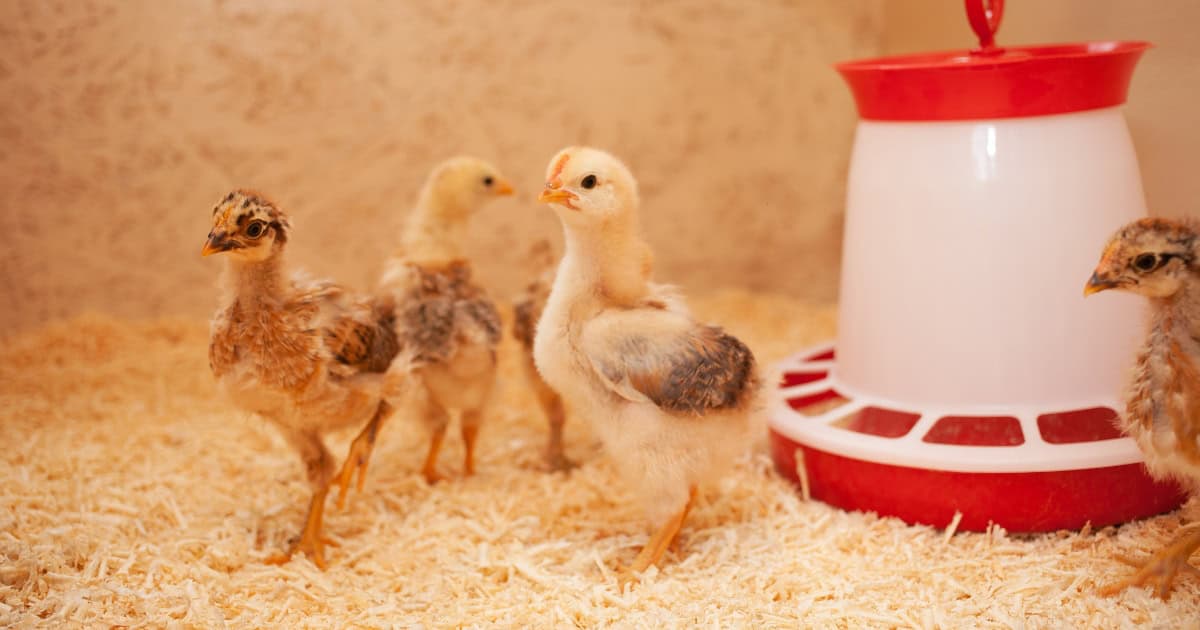
Treats Your Chickens Will Love
You can spoil your chickens with treats every now and then to supplement their balanced diet. Treats are not only a fun way to bond with your feathered friends, but they also offer additional nutrients that might be missing from their main diet.
Fruits like apples, berries, and melons make great chicken treats. They’re packed full of vitamins and antioxidants which boost overall health. But remember to remove any seeds as they could potentially be harmful to the chickens.
Vegetables such as cucumbers, peas, and broccoli are another treat option your chooks will adore. These green goodies give an extra dose of fibre helping in digestion. Always serve these raw or steamed without any seasoning.
Insects: A Protein Punch
Insects, like mealworms or earthworms, provide much-needed protein making them an ideal snack for your flock. You can purchase dried insects from pet stores or better yet start a mealworm farm at home.
Gritty Grains
A handful of grains such as oats, barley, or corn makes a wholesome treat too. Not only do grains help keep the gut healthy by promoting good bacteria growth but also encourage natural pecking behaviour reducing boredom among hens.
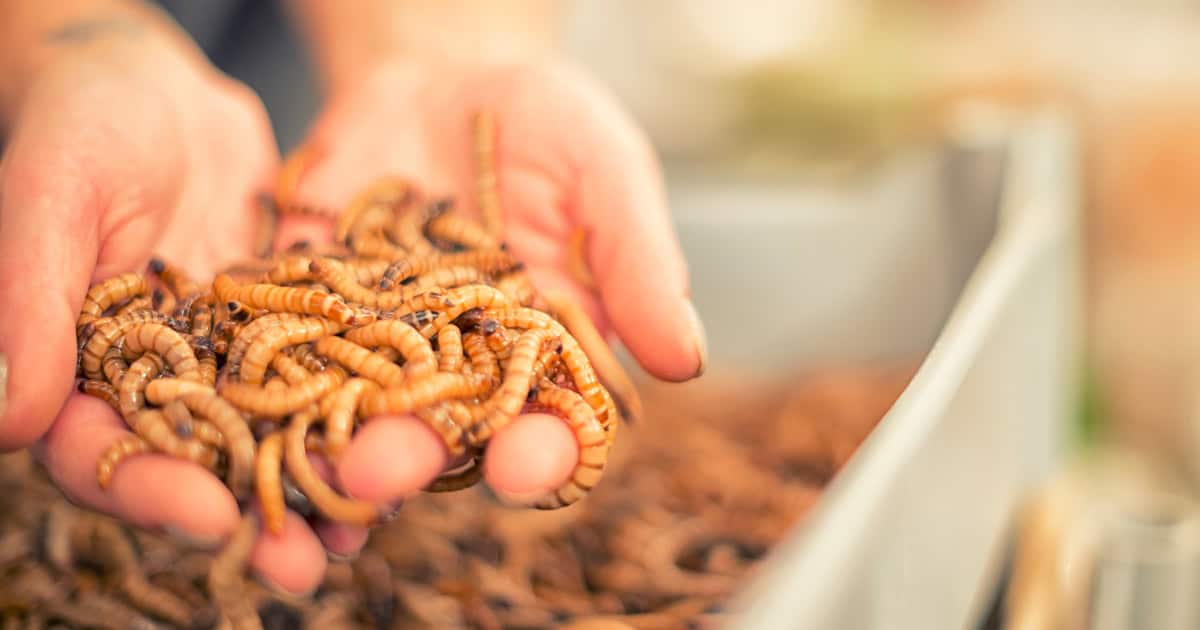
Feeding Chicks vs. Adult Chickens
It’s important to understand that chicks and adult chickens have different dietary needs. Young growing chickens need a diet high in protein to support their rapid growth, with most chick starter feeds containing about 20% protein.
It is recommended to start with a commercial chick starter for the first 6-8 weeks of life before gradually introducing them to grains and greens as they grow older.
On the other hand, adult hens typically require around 16% protein in their diets along with additional calcium for egg production. Laying hen feed often includes crushed oyster shells or limestone for this purpose.
In addition, grit is crucial at all stages of chicken life but particularly vital when introducing solid food into the diet of growing chicks.
The small stones help grind down hard-to-digest foods like seeds and grain inside their gizzard – an essential part of a healthy chicken digestive system.
To ensure you’re meeting these requirements consider rotating between quality commercial feeds and fresh kitchen scraps alongside providing access to pasture when possible.
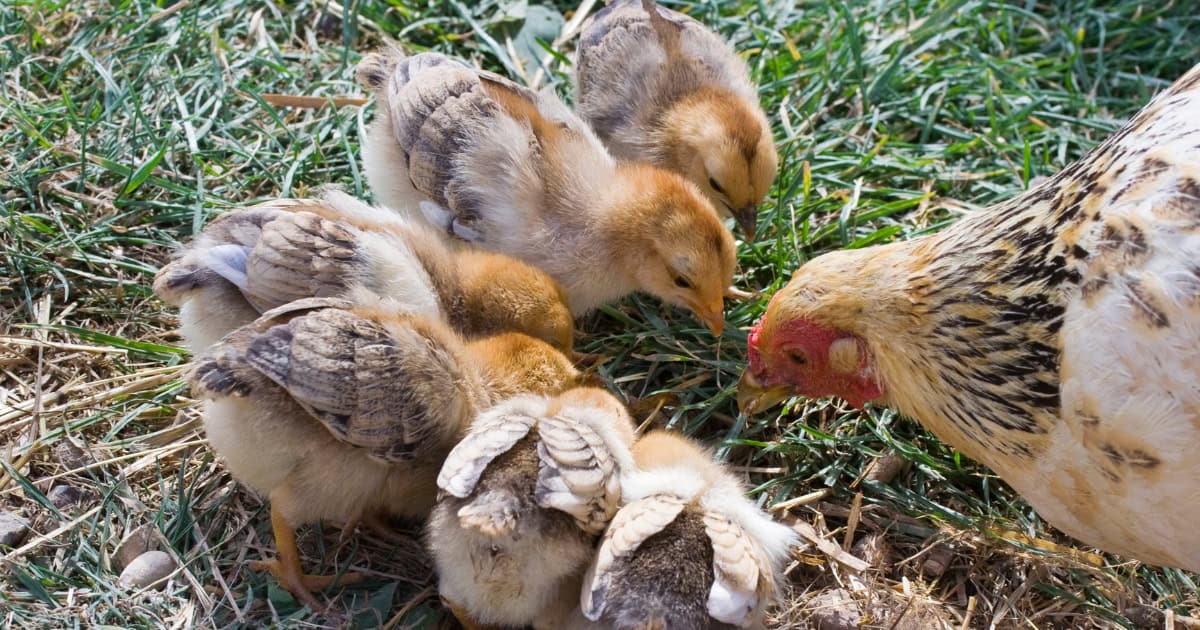
Common Feeding Mistakes to Avoid
Feeding chickens might seem straightforward, but it’s easy to make mistakes that can impact their health. Avoid making common mistakes by being aware of them.
Over-reliance on Kitchen Scraps
We all love giving our chooks a treat, but too many kitchen scraps can lead to an unbalanced diet. Chickens need a variety of nutrients that can be found in commercial feeds or well-balanced homemade diets.
Using Treats as Meals
Treats like fruits and vegetables are great for your flock, but they should only constitute about 10% of the diet. The rest needs to be nutritionally complete feed.
Inadequate Grit Supply
Grit is crucial for digestion in chickens. Without enough grit, birds struggle to break down food effectively- make sure there’s always plenty available.
Neglecting Fresh Water
Chickens drink approximately twice as much water compared with their feed intake. Always keep clean fresh water accessible at all times; this helps prevent dehydration and aids digestion.
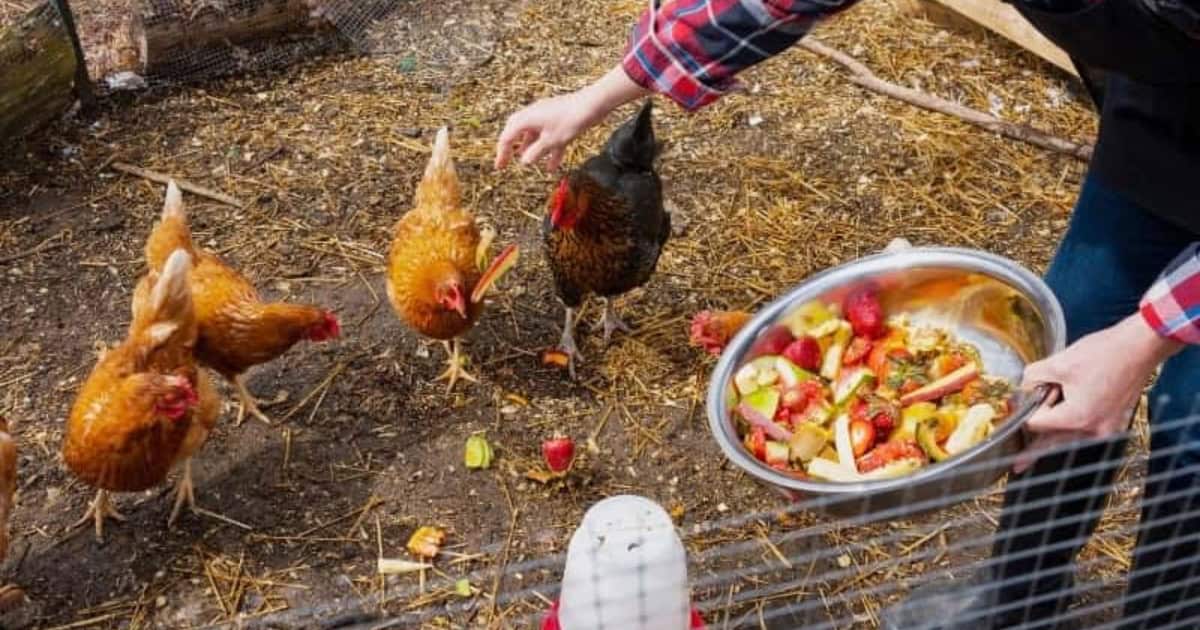
Seasonal Adjustments in Chicken Feeding
The seasons play a big part in your chickens’ diet. As the weather changes, so too should what you’re feeding them.
Summer Feeding
During hot weather in summer, it’s important to keep hydration at the forefront. Provide plenty of fresh water and consider adding water-rich veggies like cucumbers or lettuce into their feed.
You might also need to up their protein intake because egg production can increase with longer daylight hours.
Winter Feeding
Come winter, chickens require more energy to stay warm. Therefore, give them high-energy foods such as corn and oats which help maintain body heat but be careful not to overdo it on carbs.
Autumn and Spring Changes
In autumn, gradually start introducing winter feeds while spring is the perfect time for an annual worming treatment alongside regular feed. Note that these are general guidelines only – always pay attention to your flock’s specific needs.
But making seasonal adjustments will go a long way towards keeping your chooks happy all year round.
Toni’s Wrap
Taking care of your hens by providing a balanced diet is a mix of responsibility and pure joy for any backyard chicken enthusiast.
Our journey through this guide on feeding your chickens for healthy hens has highlighted the significance of well-rounded nutrition, the delight of fresh eggs, and the strong bond between well-fed hens and content flock keepers.
As you continue on your chicken-feeding adventure, just remember that your commitment to their well-being not only keeps them in tip-top shape but also rewards you with delicious eggs and the satisfaction of knowing your hens are living their best lives.
So, enjoy your time with these feathered pals, and let the daily act of feeding your chickens be a source of nourishment and happiness. Happy feeding!





